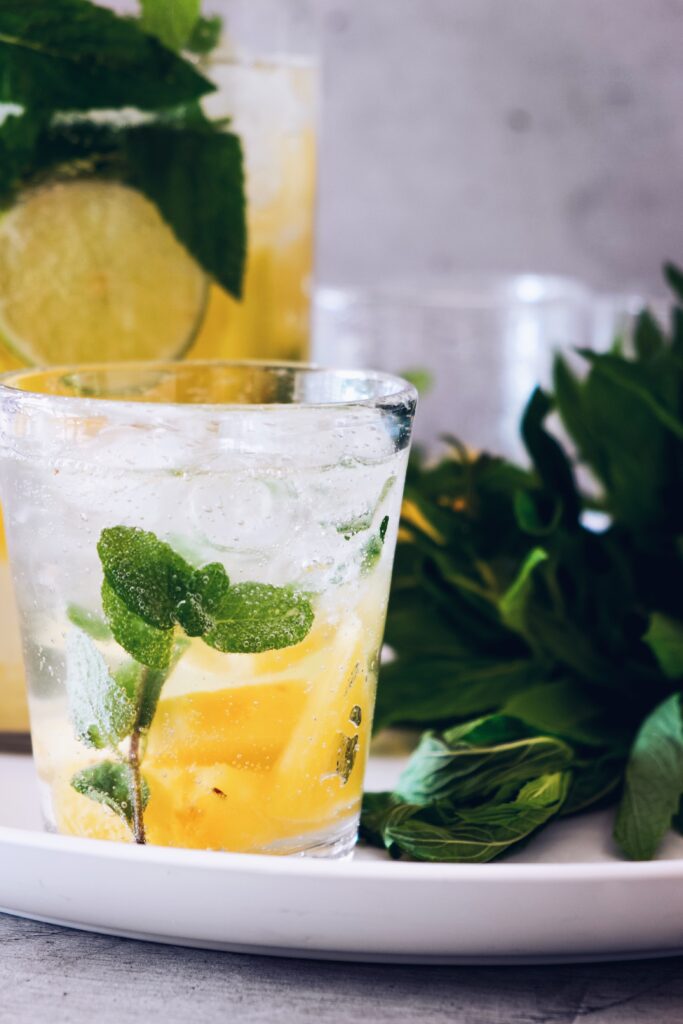Packaging clues
The adoption of actual fresh containers for ambient products triggers fresh perceptions. Two ambient examples that deploy fresh pack formats are Nestlé’s Azera Coffee and Sheba cat food. More recently the addition of a foil cap on San Pellegrino can bring on a wave of nostalgia of peeling back the wrapping of a fresh mandarin orange, whilst in reality San Pellegrino’s cap is entirely decorative. People are even inclined to justify its existence by imagining that it keeps the top fresher to drink from, and in a research group recently a consumer said that it was ‘definitely better for you because it was more natural’ in spite of the hefty 32 grams of sugar per can.
More subtle references to fresh can be seen in the use of materials. Matt foil pouches in the ambient sector, cloudy HDPE bottles for soft drinks and subtler still absorbent card for printed cartons to suggest craft materials and papers. Or alternatively the use of graphics alone with the hand scripted naivety of Belvoir Cordials or the graphic simplicity of rural craft in brands such as Bonne Maman.


Formulations
The inclusion of normally fresh ingredients in otherwise ambient products can create feelings of ‘better for me’ through to ‘justification for higher levels of indulgence’. Dairy content famously provides a halo of virtue. Yogurt coatings on cereal bars or heavily sweetened yogurts themselves retaining perceptions from the very early introduction of yogurt in the UK being associated with clean living and sport. In alcoholic drinks Baileys , alongside a new launch of Almande, highlights its fresh cream base, and Fever-Tree do a great job using fresh botanicals. Rude Health have brought an otherwise ‘dusty and dry’ category to life with the use of ‘sprouted oats’ promising the consumer the cereal will ‘come to life and release its vital nutrients’ or confectionary and the best-known glass and a half of milk in Cadbury’s dairy milk.
The inclusion of natural ingredients in beauty products has long been seen as imbuing greater efficacy and lass harm, neither is necessarily the case. For many brands, it is the cornerstone of their positioning. Body Shop, L’Occitane, Aveda, Herbal Essences to name a few but perhaps the outstanding adoption of the fresh world of association is the brand Lush. Lush uses the packaging, materials, formats, display and formulations and the entire shop format to suggest you have wandered into a delicatessen. There’s hand written product flags, bath bombs wrapped in tissue like Californian oranges, even soap cut from a block like fresh cheese. The whole store is a marvellous piece of metaphorical theatre with an open door that wafts intense fragrances into the street.
Communications
On the back of negative press Mars’ Dolmio pasta sauce took to the Metro with a full-page advert heroing the juicy freshness of their tomatoes and their commitment to ban all artificial flavours, colours, sugar and preservatives. Whilst Meantime Breweries lead with their dispending methods on their website, ensuring us that their ‘Brewery Fresh Beer’ tastes as great as the day it was made. In the pet food industry start-ups such as www.tails.com have been able to deliver the idea of freshness and personalisation through their monthly subscription service, whilst FreshPet in the US promises to deliver ‘nature’s fresh food, straight from the fridge’ with a communications campaign challenging us that ‘our families are eating healthier, fresher food. Why wouldn’t our pets? This category is ripe for development and has always followed human food trends closely so watch this space!

Positioning
Budweiser, a few years ago, started to date stamp their products in a more overt way. Like many leading brands the speed of their stock rotation enables them to make freshness claims that are more likely to be true of them than the second and third brands in the market. therefore fresher. Walkers did exactly the same in crisps. The genuinely short shelf life, chilled category, has in fact been largely championed by not manufacturers but retailers. Entire categories are virtually all own label, for example milk, a category we have worked extensively on with Arla looking to develop truly differentiated brands, click here for case study. Convenience meals are another good example, M&S have created a quality perception and in many cases reality, through heroing chilled distribution and fixtures. Their level of quality and innovation is market leading. Other examples can be seen in pop ups and street food, bucking the received wisdom that fast food is bad for you. And of course, not only fresh but harvested within days of sale has been the uniqueness that farmers markets and farm shops have bought to the market. Lately this has been supplemented by fresh doorstep distribution with brands such as Abel and Cole and in the last year Freddie’s Flowers.
If you’d like to know how we can help bring your brand to life please contact Hayley at Hayley.roe@hainesmcgregor.co.uk or 0207 352 8322.




